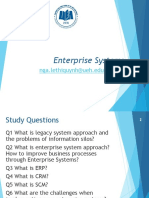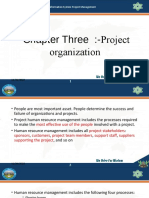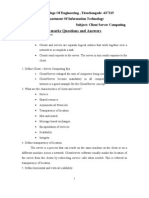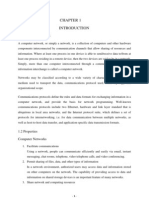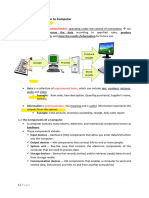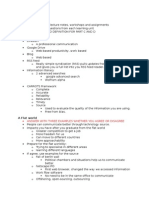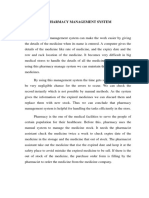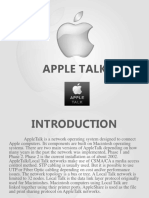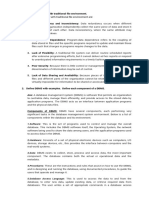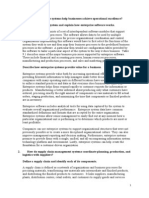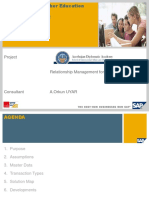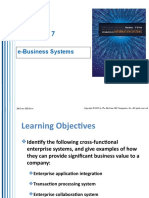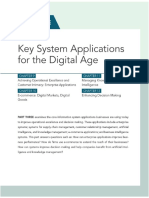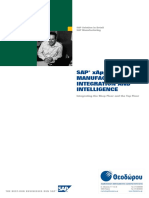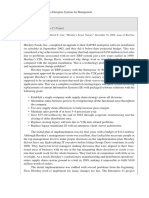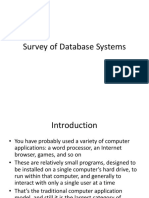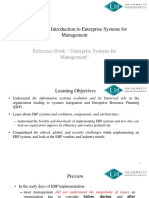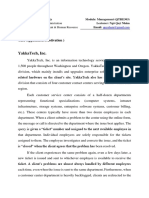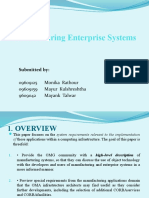0% found this document useful (0 votes)
104 views3 pagesQuestions From Chapter 9
This document provides definitions for key supply chain and enterprise systems terms. It also poses questions about Nike's supply chain management, an issue Procter & Gamble had with excess diaper inventory, and challenges of implementing enterprise applications. A diagram is drawn to show how integrated enterprise systems work across different business functions using a shared database. The business value of enterprise systems is explained as increasing efficiency, improving decision making with firmwide data, rapid response, and performance evaluation.
Uploaded by
Syeda Wahida SabrinaCopyright
© © All Rights Reserved
We take content rights seriously. If you suspect this is your content, claim it here.
Available Formats
Download as DOC, PDF, TXT or read online on Scribd
0% found this document useful (0 votes)
104 views3 pagesQuestions From Chapter 9
This document provides definitions for key supply chain and enterprise systems terms. It also poses questions about Nike's supply chain management, an issue Procter & Gamble had with excess diaper inventory, and challenges of implementing enterprise applications. A diagram is drawn to show how integrated enterprise systems work across different business functions using a shared database. The business value of enterprise systems is explained as increasing efficiency, improving decision making with firmwide data, rapid response, and performance evaluation.
Uploaded by
Syeda Wahida SabrinaCopyright
© © All Rights Reserved
We take content rights seriously. If you suspect this is your content, claim it here.
Available Formats
Download as DOC, PDF, TXT or read online on Scribd
/ 3
